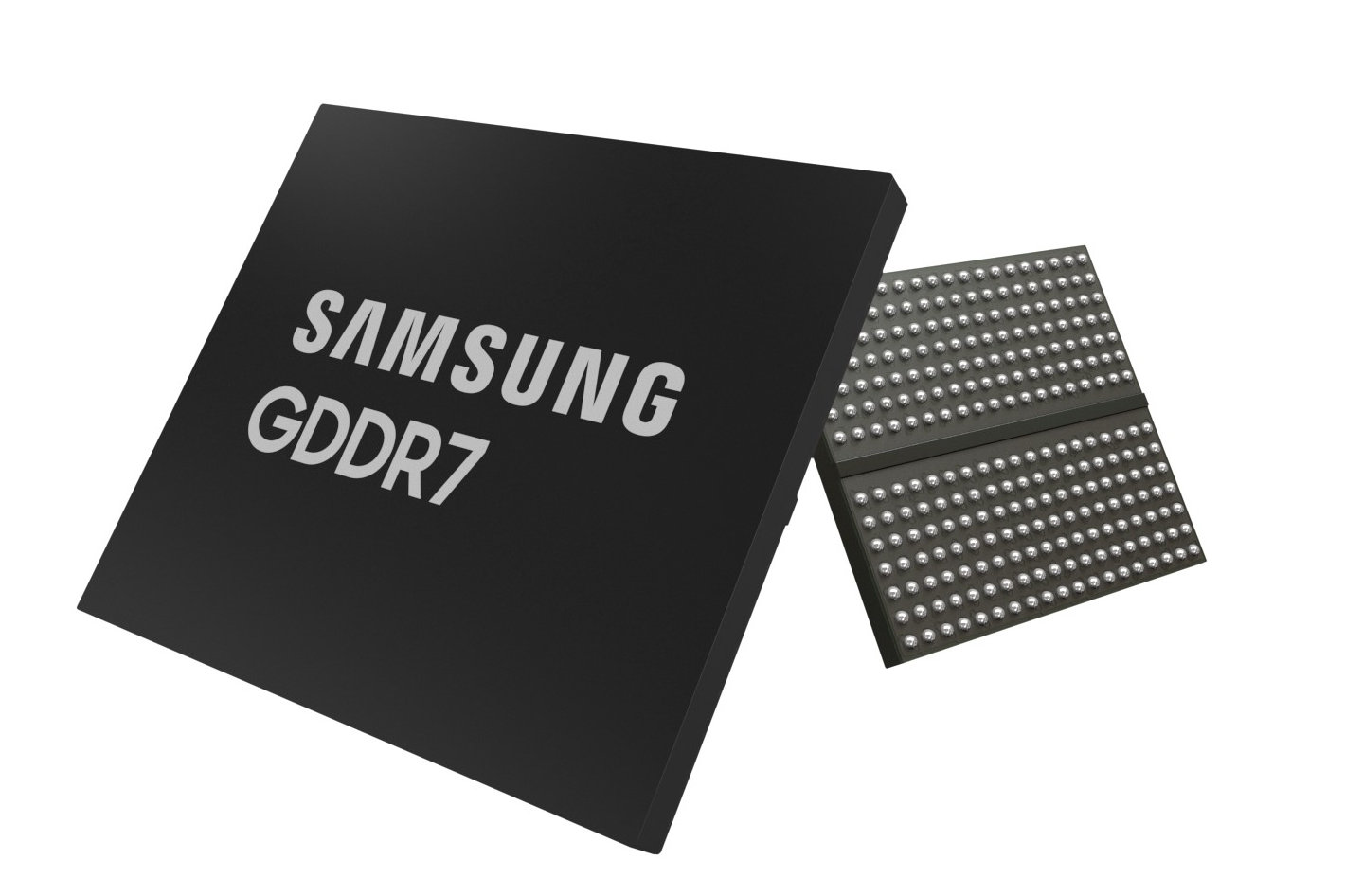
Samsung Electronics recently announced that it has completed development of the industry’s first Graphics Double Data Rate 7 (GDDR7) DRAM. It will first be installed in next-generation systems of key customers for verification this year, driving future growth of the graphics market and further consolidating Samsung’s technological leadership in the field.
Years ago, faster memory was always introduced as the way to get better graphics and faster computers. Now, although the link is still there, AI is king, and so, when introducing the new memory, Samsung says its latest 32Gbps GDDR7 will further expand capabilities in applications for AI… and all the other things too.
Following Samsung’s development of the industry’s first 24Gbps GDDR6 DRAM in 2022, the company’s 16-gigabit (Gb) GDDR7 offering will deliver, the company claims, the industry’s highest speed yet. Innovations in integrated circuit (IC) design and packaging provide added stability despite high-speed operations.
“Our GDDR7 DRAM will help elevate user experiences in areas that require outstanding graphics performance, such as workstations, PCs and game consoles, and is expected to expand into future applications such as AI, high-performance computing (HPC) and automotive vehicles,” said Yongcheol Bae, Executive Vice President of Memory Product Planning Team at Samsung Electronics. “The next-generation graphics DRAM will be brought to market in line with industry demand and we plan on continuing our leadership in the space.”
Samsung’s GDDR7 achieves an impressive bandwidth of 1.5-terabytes-per-second (TBps), which is 1.4 times that of GDDR6’s 1.1TBps and features a boosted speed per pin of up to 32Gbps. The enhancements are made possible by the Pulse Amplitude Modulation (PAM3) signaling method adopted for the new memory standard instead of the Non Return to Zero (NRZ) from previous generations. PAM3 allows 50% more data to be transmitted than NRZ within the same signaling cycle.
Significantly, in comparison with GDDR6, the latest design is 20% more energy efficient with power-saving design technology optimized for high-speed operations. For applications especially mindful of power usage, such as laptops, Samsung offers a low-operating voltage option.
To minimize heat generation, an epoxy molding compound (EMC) with high thermal conductivity is used for the packaging material in addition to IC architecture optimization. These improvements dramatically reduce thermal resistance by 70% in comparison to GDDR6, aiding in stable product performance even in conditions with high-speed operations.
